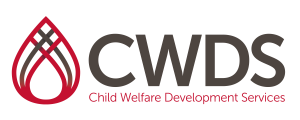CWDS Curriculum
The Effects of Abuse and Neglect on Child Development: The Preschooler eLearning
Level: Advanced Practice – Lineworker, Supervisor
Credits: 1
Intended Audience: New and experienced lineworkers and supervisors
Intended Objectives:
- Understand the child’s developmental level in the context of family, culture, and language
- Identify the effects of abuse and neglect on a child’s social, physical, emotional, cognitive and behavioral (including sexual) development
- Differentiate a normally developed child from an abused/neglected child presenting with developmental delays
- Identify strategies that can assist caretakers in promoting the healthy development of abused children
- Value the evidenced based and empirically supported interventions suitable for preschool-aged children exposed to abuse and trauma
- Integrate what you have learned into a trauma-informed case plan for the child and family
Topics Include:
- Brief review of normal preschooler development
- Effects of abuse on development, internal and external factors
- Effects of abuse on domains of development
- Developmental and trauma informed practice implications for CWS
- Trauma Informed Assessment and Treatment Implications
CalSWEC Competencies Addressed:
1.1 Student demonstrates respect, fairness, and cultural competence in assessing, working with, and making service decisions regarding clients of diverse backgrounds.
3.10 Student understands how attachment, separation, and placement affect a child and family and how these experiences may influence a child’s physical, cognitive,
social and emotional development.
4.3 Student works collaboratively with biological families, foster families, and kin networks, involving them in assessment and planning and helping them access
services and develop coping strategies.
5.1 Student demonstrates understanding of child and youth development, including physical, cognitive, social, and emotional components, and can recognize
developmental indicators of abuse or neglect.
5.5 Student demonstrates understanding of how the strengths perspective and empowerment approaches can positively influence growth, development, and behavior change.
Posted In:eLearning



